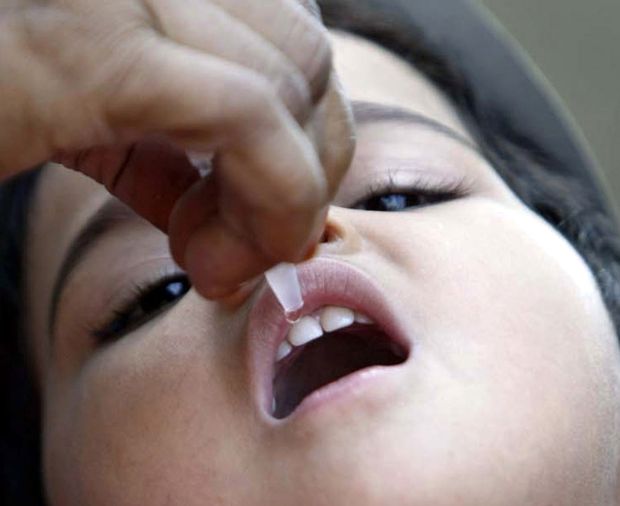KOTTAYAM, India (CNS) — As the World Health Organization declared India “polio-free” Feb. 11, church health workers celebrated and reflected on the challenges they faced convincing parents to allow their children to get the vaccine.
“It is a moment of great of joy for all the health workers,” said Father Tomi Thomas, director-general of the Catholic Health Association of India, many of whose 3,400 Catholic health care centers were partners in the government’s polio eradication program.
“At least 1 million children were reached through our centers annually,” said the priest, a member of the Indian Missionary Society.
[hotblock]
John Shumlansky, Catholic Relief Services’ country representative in India, told Catholic News Service, “This is a big day for us.”
Shumlansky attended national celebrations, led by Prime Minister Manmohan Singh, at an indoor stadium in New Delhi Feb. 11. Though India — a nation of 1.27 billion people — recorded 741 cases of polio in 2009, no incident of the crippling disease had been reported since January 2011.
Summing up CRS involvement in India’s fight against the disease that affected 200,000 annually in the 1980s, Shumlansky said his agency helped mobilize people to facilitate the government’s polio immunization program and vaccinate more than 5 million children from 2008 to 2012. While the government provided the polio vaccine and oral drops to the church centers, the cost of mobilizing the teams was sponsored by CRS, the U.S. bishops’ international relief and development agency.
“In 2013 alone, CRS reached nearly 585,000 people directly and indirectly to promote polio vaccinations,” said Shumlansky. CRS, he added, operates through its local partners in several regions, including the northern state of Uttar Pradesh — India’s most populous state, the size of Brazil.
Under the mass immunization campaign, more than 2 million vaccinators would visit 200 million households across the country and immunize 170 million children under age 5 on designated days. Polio booths were set up to provide oral polio drops even at railway stations and in marketplaces.
“We faced a lot of resistance from the communities,” said Deepti Pant, CRS’ head of office in Uttar Pradesh state. “It was rooted in the misconception that it (administering polio drops) would make the child impotent. The mothers would ask our animators and others to leave (the house).”
“We had been chased out from the houses by women several times,” Holy Cross Sister Consilia Pengadu confirmed to CNS.
“There was a widespread rumor among the people that if the polio drops were given, children will become impotent. That’s why they kept us away,” said Sister Pengadu, who works at the Bishop Conrad Memorial Hospital in rural Uttar Pradesh.
Only after taking into confidence the Muslim clerics and Hindu priests, “we could break the resistance of the people,” said Sister Pengadu, whose center facilitated the immunization of more than 25,000 children in six years.
Pant said in one textile-making region, it was difficult to convince the illiterate weaver community of the need for immunizations.
“Our animators approached the power-loom owners and explained the dangers of polio. We pleaded with them to ask the weaver families to take their children for the polio immunization. We had roped in even grocery sellers and other traders to convince these weavers,” she said.
Even after the much-publicized polio vaccination days, Pant said, teams of animators would visit each house and mark an X on the entrance of houses where the children had not been given the polio drops.
“It is certainly a campaign that has gone beyond polio vaccination. Besides vaccination, sanitation is equally important in preventing polio and other diseases,” Pant said.
In villages, special meetings were organized for mothers to discuss hygiene. These awareness programs were held in schools, and the message of hygiene and sanitation was spread among the students. The elected village council members were also part of the awareness program.
While the polio eradication campaign has raised the health awareness among the poor, the Catholic Health Association of India head noted that “the challenges are too many.”
“The threat of re-infection looms large. And we need to be vigilant. Keeping polio out is not the only part of what India has to achieve to secure the lives of all its newborn children,” said Father Thomas.
He quoted a recent UNICEF report, which said that 1.4 million children under the age of 5 died in India in 2012 from preventable diseases like pneumonia, diarrhea “not to speak of malnutrition, which is allied to poverty and ignorance.”
PREVIOUS: A turbulent year that strengthened the papacy
NEXT: Religious leaders reiterate: Central African conflict not religious




Share this story